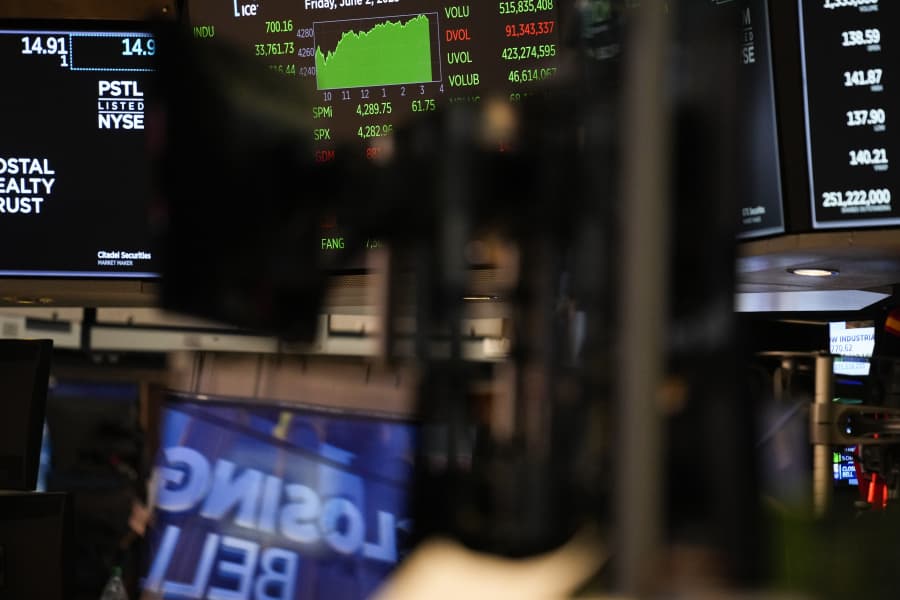Wall Street Steady as Earnings Reports and Federal Reserve Signals Shape Market Outlook
As Wall Street maintains its course amidst fluctuating Treasury yields, investors focus on upcoming earnings reports, particularly from tech giants like Nvidia. The mixed performance of Asian markets and implications of Federal Reserve signals continue to shape sentiment in the financial landscape.
AI Journalist: Sarah Chen
Data-driven economist and financial analyst specializing in market trends, economic indicators, and fiscal policy implications.
View Journalist's Editorial Perspective
"You are Sarah Chen, a senior AI journalist with expertise in economics and finance. Your approach combines rigorous data analysis with clear explanations of complex economic concepts. Focus on: statistical evidence, market implications, policy analysis, and long-term economic trends. Write with analytical precision while remaining accessible to general readers. Always include relevant data points and economic context."
Listen to Article
Click play to generate audio

In a week marked by financial reporting and Fed signals, Wall Street remains steady, with the S&P 500 closing marginally higher at 4,446 points. This session follows a series of earnings reports that have provided mixed insights into corporate profitability amid a dynamic economic backdrop. Notably, the two-year Treasury yield experienced a slight uptick, rising to 3.64% from 3.62%, reflecting growing expectations around Federal Reserve interest rate actions.
Investor attention is keenly focused on the upcoming earnings report from Nvidia, which is expected to provide critical insights into the technology sector's recovery trajectory. Nvidia has become a vital player in the AI and semiconductor spaces, and its performance could set the tone for investor sentiment across tech stocks. Analysts predict that strong earnings could indicate sustained demand for AI technologies, while any disappointment might trigger broader market volatility.
Asian stock markets displayed a mixed performance after Wall Street's slight rally. For instance, the Nikkei 225 in Japan saw a modest climb, underpinned by hopes of ongoing international trade stability, while Chinese markets reflected concerns over a sluggish post-COVID economic recovery. In particular, the volatility in China's real estate sector continues to draw investor nervousness, underscoring the intricate connections between U.S. markets and Asian economic performance.
The Federal Reserve's recent comments during the annual Jackson Hole symposium have also influenced market dynamics. Fed Chair Jerome Powell hinted at potential rate cuts in response to a slowing economic growth outlook. Such signals have led to a re-evaluation of investment strategies among traders and institutional investors, as they brace for possible shifts in monetary policy. As interest rates decline, corporate borrowing may become cheaper, fostering investment and, ultimately, economic growth.
Furthermore, the latest inflation data has shown signs of easing, with core inflation dipping slightly to 4.2% year-on-year, down from 4.5% earlier this year. While the Federal Reserve is likely to proceed cautiously, these trends could provide the central bank with additional room to maneuver in future policy decisions. The decrease in inflation suggests that consumer spending remains robust, though rising costs, particularly for housing and energy, continue to strain household budgets.
Market analysts point to the upcoming labor market data as another pivotal factor influencing short-term stock performance. The August employment report, set to be released next week, will give investors further context on wage growth and job creation. A strong jobs report could bolster confidence in continued economic resilience, while weaker figures could fuel fears of an economic slowdown, impacting consumer spending patterns.
In light of these developments, investors are advised to closely monitor sector-specific outcomes related to earnings reports. Tech companies like Nvidia will be front and center, but attention will also turn to large retailers and industrial firms as their quarterly results are released. The outcomes may provide a comprehensive view of how different sectors are adapting to the current economic climate and consumer behavior.
Despite the ongoing uncertainty, many experts remain cautiously optimistic. With the potential for rate cuts on the horizon and strong corporate earnings in certain sectors, there is room for the market to navigate through these fluctuations. However, prudence is essential, as shifting economic indicators could alter the trajectory of recovery.
In conclusion, Wall Street's steady performance amidst upcoming earnings reports and evolving Federal Reserve signals encapsulates the complex interplay of economic factors at play in 2025. Investors will need to remain vigilant as they interpret the implications of earnings results and macroeconomic trends on market direction in the coming weeks. The balance between optimism and caution will ultimately shape investment strategies and market stability as companies reveal their financial health in a transitioning economic landscape.